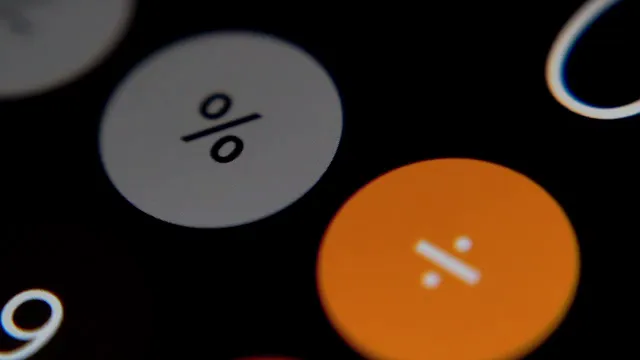Introduction
The SAT can feel like a daunting mountain to climb, but fear not! With the right tools, you can navigate this exam landscape like a pro. Enter the SAT Score Calculator—a nifty companion that helps predict your performance and guide your preparation. Whether you’re aiming for a stellar score or simply want to understand the ins and outs of the SAT scoring system, this guide will take you through everything you need to know. From raw scores to scaled scores, we’ve got you covered!
To make your study process even smoother, consider grabbing a copy of the SAT Prep Black Book: The Most Effective SAT Strategy Book. It’s filled with practical strategies that can help you tackle the test with confidence! With this book, you’ll not only learn how to approach questions effectively but also how to manage your test-taking time like a seasoned pro.

Summary
In this comprehensive guide, we examine the mechanics of the SAT Score Calculator, breaking down its functionalities and significance in your test preparation journey. We discuss the structure of the new Digital SAT, including its modular format, adaptive testing features, and scoring nuances. You’ll learn how to effectively use the score calculator to estimate your performance and the importance of understanding raw vs. scaled scores. Additionally, we touch on what constitutes a good SAT score, the impact of adaptive testing on your results, and how to maximize your score potential. By the end of this article, you’ll be equipped with the knowledge to make informed decisions about your SAT preparation. So, whether you’re a first-time test-taker or looking to improve your score, this guide is your go-to resource!
And hey, while you’re preparing, don’t forget to stock up on study snacks! Check out this Study Snacks Variety Pack that will keep your brain fueled during those long study sessions. Because who says you can’t munch while you crunch numbers?

What is the SAT Score Calculator?
The SAT Score Calculator is a smart tool designed to help students assess their potential SAT scores. It simplifies the scoring process, giving you insight into how your raw scores convert to scaled scores. This knowledge is vital. Why? Because understanding your score can help tailor your study plan.
When using the calculator, you input your correct answers from the various modules. For example, in the Reading and Writing section, you’ll enter the number of correct responses from both modules. The calculator then estimates your scaled scores based on historical data. This can provide a clearer picture of where you stand and what areas need improvement.
Why is this important? Well, knowing your potential score can help you set realistic goals. It also allows you to identify weaknesses in your test-taking skills. Plus, it can ease some of the anxiety that comes with preparing for the SAT. After all, knowledge is power!
With the SAT Score Calculator, students can gain confidence in their abilities and focus on what really matters: preparation and practice. No more guessing games about your potential score! This calculator takes the mystery out of the equation, setting you up for success on test day.
Speaking of preparation, consider investing in The Official SAT Study Guide. This guide contains real SAT questions and answers, making it an essential resource for your study arsenal. It’s like having a mini-exam in your hands!

To further understand the significance of the SAT Score Calculator, check out this resource on the SAT Score Calculator.
Raw Scores vs. Scaled Scores
Understanding the difference between raw scores and scaled scores is crucial for SAT test-takers. Let’s break this down in a simple way.
Raw Scores are straightforward. They count the number of correct answers you provide on the test. For example, if you correctly answer 40 out of 58 questions, your raw score is 40. Easy peasy! You can think of it as the score on your math quiz back in high school—no fancy calculations, just pure accuracy.
Now, let’s talk about Scaled Scores. These scores are a bit more complex. The SAT is scored on a scale from 400 to 1600. Your raw score gets converted into this scaled score. Why? Because the SAT aims to standardize scores across different test versions and administrations. A raw score of 40 might mean different things depending on how tough the questions were on that particular test day. Scaling helps ensure fairness.
So, how does this conversion happen? The College Board uses statistical methods to translate raw scores into scaled scores. They look at the overall performance of students across various tests and create a curve. For instance, if the average raw score for a specific test was lower due to harder questions, the scaled scores adjust accordingly to reflect that.
Let’s illustrate this with an example. Say you answered 40 questions correctly in the Reading and Writing section. On one test version, this might give you a scaled score of 600. On another version, with trickier questions, the same raw score might only yield a 580. The variability in scoring is what makes understanding these concepts essential.
In the math section, if you score 20 out of 22 questions right, you could end up with a scaled score that reflects your understanding of the material, factoring in the test’s difficulty level. The SAT seeks to measure not just what you got right but how well you performed in context.
This conversion process ensures that your score reflects your abilities fairly. It’s crucial to recognize that these scores can influence college admissions decisions. A higher scaled score can make your application more competitive, so striving for accuracy in raw scores is vital.
Lastly, remember that there’s no penalty for guessing on the SAT. So, if you’re unsure about an answer, take a shot! Every raw score counts toward your total. Understanding raw versus scaled scores empowers you to tackle the SAT with confidence. Now go forth and conquer that test!

Tips for Maximizing Your SAT Score
When it comes to acing the SAT, preparation makes perfect! Here are some tips to help you skyrocket your score.
Study Strategies and Resources
Start by gathering the right resources. Use official SAT prep books and online platforms, like Khan Academy. They offer practice questions and full-length tests that mimic the actual exam. Consistent study sessions, even for just a few hours a week, can significantly enhance your understanding. Remember, it’s not about cramming but rather about building knowledge gradually.
Organizing your study schedule is crucial. Break down topics into manageable sections. Focus on one subject daily, mixing math, reading, and writing. This variety keeps things fresh and less monotonous. Don’t forget to review your mistakes! Understanding where you went wrong can turn weaknesses into strengths.
To keep your study space organized, consider investing in a Desk Organizer Set. A tidy space can boost your productivity and keep distractions at bay. After all, who can concentrate with a mountain of papers on their desk?

Importance of Practice Tests
Practice tests are your best friends! They not only familiarize you with the test format but also help in managing exam anxiety. Simulating test day conditions by timing yourself can improve your time management skills. After completing a practice test, review your answers. Determine which questions tripped you up and revisit those topics.
Aim to take at least three full-length practice tests before the actual exam. This will help you gauge your progress and become comfortable with the timing and pacing of the test. Plus, seeing improvement over time is a great confidence booster!
And if you want to sharpen your vocabulary skills, grab a set of Flashcards for SAT Vocabulary. They’re a fun way to learn and can easily fit into your study routine!

Managing Time During the Exam
During the SAT, time management is key. Each section has a time limit, and you need to pace yourself. For example, in the math section, if you have 35 minutes for 22 questions, aim to spend about 1.5 minutes per question. Some questions may take longer, but don’t dwell on them. If you find yourself stuck, mark it and move on. You can always return to it later if time permits.
Use the process of elimination for multiple-choice questions. This strategy can often lead you to the correct answer even if you’re not entirely sure. Remember, there’s no penalty for guessing, so don’t leave any questions blank!
By implementing these tips, you’ll be better prepared and more confident on test day. Taking a proactive approach to your SAT prep can make all the difference!

Conclusion
In summary, maximizing your SAT score requires a mix of strategic studying, consistent practice, and effective time management. Utilize the SAT Score Calculator to estimate your potential performance and identify areas for improvement. Remember to embrace the journey, as each study session brings you one step closer to your goals.
As you gear up for the SAT, keep your chin up! Every effort you put in now will pay off in spades later. Whether it’s hitting the books or taking practice tests, every little bit counts. Believe in yourself and your abilities. You’ve got this! So strap on those study shoes and get ready to conquer the SAT!

FAQs
What is an SAT Score Calculator?
The SAT Score Calculator is an online tool that estimates your potential SAT score based on your raw scores from practice tests. By inputting the number of questions you answered correctly, you can receive an estimated scaled score.
How does the SAT scoring work?
The SAT is scored on a scale from 400 to 1600. Your raw scores, which reflect the number of correct answers, are converted to scaled scores for each section. The total score is the sum of these scaled scores.
What is considered a good SAT score?
A good SAT score varies by college, but generally, a score of 1200 or higher is considered above average. For more competitive colleges, a score of 1400 or above is often desired, while top-tier schools may expect scores of 1500 or higher.
How can I improve my SAT score?
Improving your score involves focused study on weak areas, regular practice tests, and utilizing official resources like the College Board’s Bluebook. Consider joining study groups or seeking tutoring for personalized support.
Do I lose points for wrong answers on the SAT?
No, the SAT does not penalize you for incorrect answers. It’s best to attempt every question, even if you have to guess. Just remember, an educated guess is better than leaving it blank!
How important is the SAT in college admissions?
While the SAT is an important component, it’s just one part of your application. Colleges also consider your GPA, extracurricular activities, essays, and recommendation letters. A strong overall profile can help you stand out!
How often should I take practice tests?
Aim for at least three full-length practice tests before the actual exam. This helps you get comfortable with the test format and improves your time management skills.
Can I use a calculator on the SAT?
Yes! You can use a calculator on certain sections of the SAT, specifically in the Math section. However, make sure you’re familiar with your calculator’s functions before test day.
Where can I find additional SAT prep resources?
Many online platforms, such as Khan Academy, offer free SAT prep materials, including practice questions and full-length tests. You can also explore SAT prep books from reputable publishers for structured study plans. For instance, the Kaplan SAT Prep Plus 2022 is a fantastic resource!
How to Use the SAT Score Calculator
Using the SAT Score Calculator is a breeze! This handy tool helps you estimate your potential SAT score based on your raw scores. Let’s break down the process step by step.
Step 1: Gather Your Raw Scores
Before you begin, make sure you have your raw scores handy. These are simply the number of questions you answered correctly in each module.
For the Digital SAT, you’ll typically have the following modules:
- Reading and Writing Module 1: 27 questions
- Reading and Writing Module 2: 27 questions
- Math Module 1: 22 questions
- Math Module 2: 22 questions
Count up your correct answers and jot them down.
Step 2: Access the Calculator
Head over to a reliable SAT Score Calculator online. There are various options available, each designed to help you estimate your score. Make sure to select a calculator that supports the Digital SAT format.
Step 3: Input Your Scores
Once you have the calculator open, you’ll see fields for each module. Enter your raw scores in the respective boxes:
- For Reading and Writing Module 1, input your score.
- Do the same for Module 2.
- Next, input your scores for both math modules.
Step 4: Choose the Right Settings
Some calculators allow you to choose between different scoring curves. Make sure to select the Digital SAT option if prompted. This ensures your score estimates are as accurate as possible since the scoring method can vary between the digital and traditional SAT formats.
Step 5: Hit Calculate!
After entering all your scores, click the “Calculate” button. The calculator will crunch the numbers and provide you with your estimated scaled scores for each section, along with a total score.
Step 6: Interpreting the Results
Now comes the fun part—interpreting your results! The calculator will give you scaled scores ranging from 200 to 800 for each section. Your total SAT score will be the sum of these two scores, ranging from 400 to 1600.
Remember, these scores are estimates based on historical data and the scoring algorithms used by the College Board. They can provide crucial insights into your potential performance.

Importance of Accurate Data
Inputting accurate data is essential. If you mistakenly enter a score, it can skew your results. Always double-check your raw scores before hitting calculate. This tool can help you gauge your strengths and weaknesses, enabling you to focus your study efforts where they’re needed most.
Conclusion
Using the SAT Score Calculator is a straightforward way to estimate your performance. It can help you set realistic goals and manage your preparation strategy. With a little practice and the right data, you’ll gain valuable insights into your SAT journey. Happy calculating!

Navigating the Adaptive Nature of the Digital SAT
The Digital SAT introduces an exciting twist in standardized testing—adaptive testing. But what does that mean for you? In simple terms, the Digital SAT adjusts the difficulty of questions based on your performance as you go. If you ace the first set of questions, guess what? The next ones get trickier! Conversely, if you struggle, the test will ease up a bit. This method aims to provide a more accurate assessment of your skills.
So, how does this impact your scoring? Each module contains a set number of questions. In the Reading and Writing sections, you have two modules with 27 questions each. The Math section also consists of two modules with 22 questions each. Your raw score, the total number of correct answers, is then converted into a scaled score ranging from 200 to 800 for each section. The total SAT score will still range from 400 to 1600.
This adaptive structure means your performance in the first module directly influences the next. If you’re knocking it out of the park in Module 1, prepare for a more challenging Module 2. This can potentially enhance your overall score, but it also places more pressure on you to perform well right from the start.
To tackle this adaptive testing effectively, consider the following strategies:
- Aim High in the First Module: Your performance in Module 1 is crucial. It sets the tone for what comes next. So, start strong! Focus on accuracy and confidence.
- Practice Adaptive Tests: Familiarizing yourself with the test format is key. Use practice tests that mimic the adaptive nature of the Digital SAT. This will help you get used to the shifting difficulty levels.
- Review Your Mistakes: After practice tests, spend time analyzing what went wrong. Understanding your weak spots will help you improve and perform better under pressure.
- Stay Calm and Flexible: The SAT can be unpredictable, especially with its adaptive nature. Keep your cool. If a question stumps you, move on and come back if time permits.
- Manage Your Time Wisely: Each section has a time limit, so pace yourself. Don’t dwell too long on any single question. Remember, every question matters, and there’s no penalty for guessing.
By embracing the adaptive format and employing these strategies, you can navigate the Digital SAT like a seasoned pro!

What Constitutes a Good SAT Score?
Determining what constitutes a good SAT score can feel like navigating a maze. It depends on various factors, including your target colleges and national averages. Let’s break it down.
National Averages
In recent years, the national average SAT score has hovered around 1050 to 1100. This places you in a decent position for many colleges. However, the definition of a “good” score can vary significantly depending on your goals.
Competitive Landscape
For highly selective colleges, you’ll want to aim higher. A score of 1400 or above is often seen as competitive for top 50 universities. If you’re eyeing elite institutions, consider aiming for a score of 1500 or higher. This score can place you in the top percentile of applicants, potentially giving your application a boost.
Percentiles Matter
Understanding score percentiles can also provide context. For instance, scoring in the 75th percentile means you performed better than 75% of test-takers. For many colleges, a score in this range is considered strong.
College-Specific Requirements
Different colleges have different benchmarks. For example, while a 1200 might be excellent for a state university, it may be insufficient for Ivy League schools, where the average score often exceeds 1500. Research the specific requirements of your target colleges to set realistic goals.
Other Factors at Play
While SAT scores are important, remember that they’re just one piece of the puzzle. Colleges also consider your GPA, extracurricular activities, essays, and letters of recommendation. A strong overall application can sometimes offset a less-than-stellar SAT score.

Conclusion
In essence, a good SAT score is subjective and varies based on your aspirations and the colleges you wish to attend. Aim for scores above national averages, but always consider the broader context of your application. With diligent preparation and targeted study, you can achieve your desired SAT score and enhance your college prospects. Stay motivated, and good luck!
Please let us know what you think about our content by leaving a comment down below!
Thank you for reading till here 🙂
All images from Pexels




